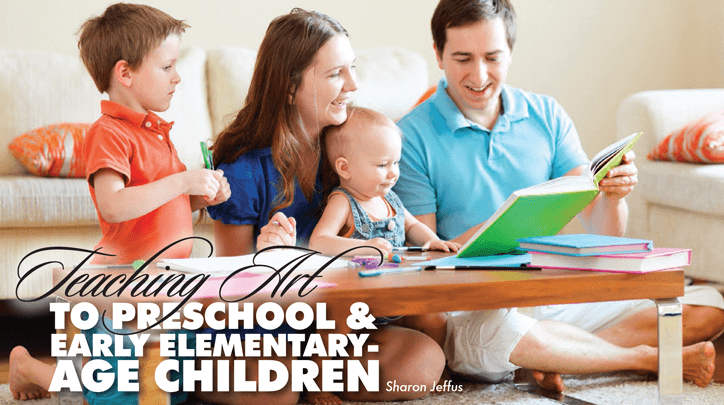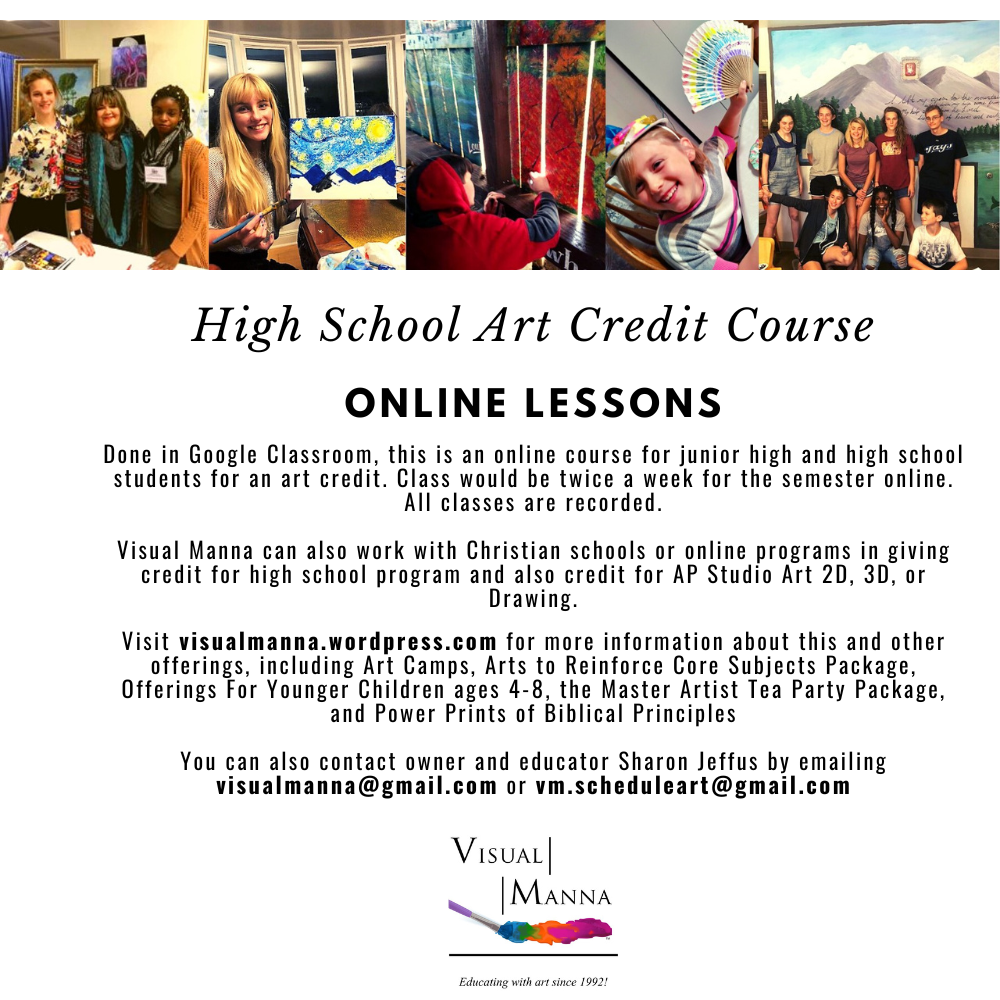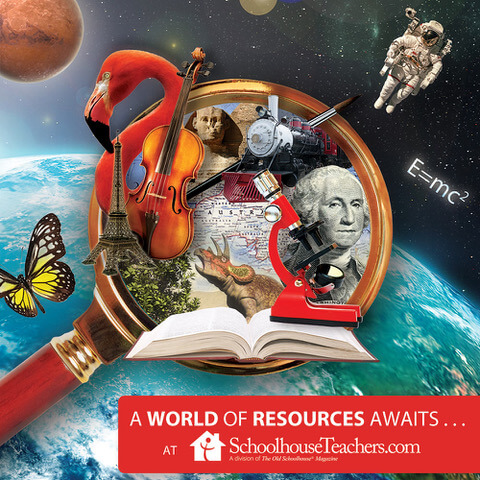by Sharon Jeffus
When we think of art for preschool and early elementary, we need to think of fun and adventure.
Children this age have a short attention span, and we don’t want to bore them or they will disengage. Lessons need to be varied with lots of action, and simplicity is the key to success.
Teaching Art
Following are the most important things to remember when teaching your young child art:
Practice Muscle Control – Have your children practice fine-muscle control in each art lesson. Learning how to control paint, crayons, scissors, and other art tools helps children gain the skills necessary for later writing activities.
Develop Awareness of Art – Developing perceptual abilities is very important. Help children notice and verbalize what they see. While looking at master art work, children should be made aware of the elements and principles of art, such as line, shape, texture, and color. They should talk about what is happening in the picture.
Teach Problem Solving – Making decisions and solving problems is a primary benefit of a good art lesson. Ask children what color they should use, how big they should make the person, or if they want to make a border.
Provide Encouragement – Experiencing success is a wonderful benefit of each art lesson. Because art leaves the ending open to the creator, all children experience a measure of success. Just as no three architects come up with the same idea for a building, no three art projects will be the same. There is no one right answer. This is why art activities are appropriate for children with special needs, too. Sincere encouragement by the teacher is important. Even if you only remark on the lovely way they used the color green, that is enough. Children become better artists with encouragement.
Use the Right Tools – In my opinion, cardstock paper is the best for younger children. A heavier-pound paper will have less chance of tearing than copier-weight paper.
USING MASTER ART
It is important that young children learn to appreciate master art. I remember reading an article about a mom whose daughter was an award-winning success as an art teacher with challenged children. The mother said that she owned a large book about Leonardo da Vinci that had a special place on her living room coffee table. Her three-year-old daughter took an orange crayon and colored on the pages. The mom was devastated and gave the child the book for her toy box. It became her daughter’s favorite book. The mother, very “tongue-in-cheek,” claimed it was responsible for her daughter’s great success.
In reality, though, showing great master art to little ones is an excellent thing to do. I love to hear parents say how amazed they were when they went to the art museum and their first-grader could recognize master art.
When using master art with children, you need to include easy observation, questions and answers, and then a simple art project.
Here is an example:
After reading “The Ugly Duckling,” look at Audubon’s swan. You can explain that a swan is a bird that can fly and swim. Ask how many swans are in the picture, what color they are, if the swans’ legs can be seen, how many flowers there are, what color the flowers are. Ask the children if they would like to be in the water with the swan.
Then get several colors of blue paper and have the children tear the paper into long strips. They can paste the strips onto a background for the water. This is a fine-motor-skill activity. Then have them draw a simple swan, using the letter “S.” You may need to help make the S shape of the swan or guide their hand as they make it. In other lessons you can show a master painting and discuss vertical lines (standing straight and tall) and horizontal lines (that look like they’re sleeping). You can also talk about basic shapes and radial lines that come out from the center, like rays of the sun or spokes of a wheel.
THINKING OF ART AS TREASURE
I saved a picture that my son did at age three. It only vaguely resembles a bear, but that is part of the treasure of the picture. I remember his pride in drawing it all by himself. And I will never forget walking into my doctor’s office and seeing an exhibit of brightly colored art. I immediately thought “abstract.” I was delighted to find out it was the art of his three-year-old daughter. He understood that art is not only important to the education of the whole child, it is a wealth to savor.
Sharon Jeffus has published her first book of lessons for younger children that incorporates the ideas in this article. E-mail her at visualmanna@gmail.com for more information. This article was originally published in the 2014 winter edition of the Virginia Home Educator.










